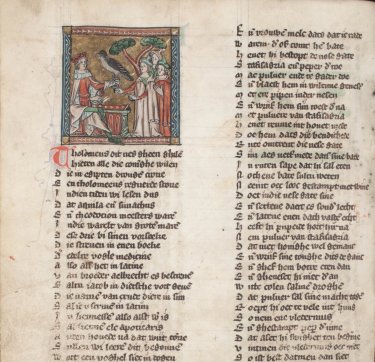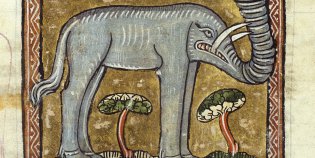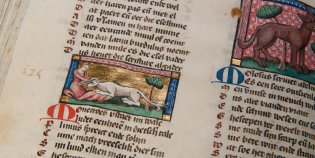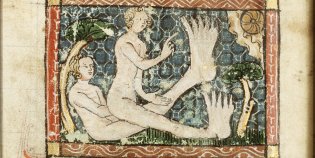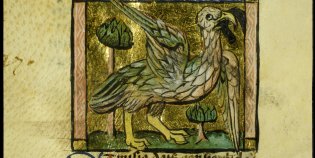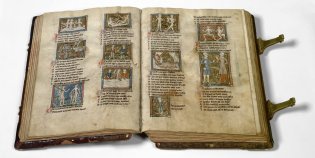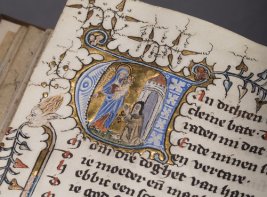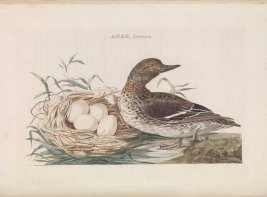Der naturen bloeme by Jacob van Maerlant
Around 1270 Jacob van Maerlant wrote Der naturen bloeme: a medieval encyclopaedia about all the beauty that nature has to offer. The work is written in Dutch. This is exceptional: it is the first text of this genre that has been preserved in the vernacular. The KB owns not 1, but 2 manuscripts of this extraordinary work. Both manuscripts contain beautiful illustrations of animals, trees and people.
Provenance of Der naturen bloeme
Jacob van Maerlant (ca. 1235-1300) is one of the most important Dutch poets of the Middle Ages. In addition to Der naturen bloeme, he wrote a number of other important works, such as the Spiegel historiael (the first world history in the vernacular) and the Rijmbijbel (a Biblical history book). The KB also has manuscripts of both texts. Maerlant wrote more than 230,000 lines of verse during his lifetime. That makes him one of the most productive authors of his time.
The most important source for Der naturen bloeme
The most important source that Maerlant uses for his Der naturen bloeme is the Liber de natura rerum (ca. 1245), written by Thomas van Cantimpré. It is a Latin encyclopedia about everything that can be found in nature. Der naturen bloeme is not a literal translation of this: Maerlant makes his piece more accessible than the original and he also leaves out large parts. He also emphasizes that he did not just get his information from somewhere. In his book he writes: 'Whoever wants, must believe; me a concern. But I am absolutely certain that I told the truth as I found it described."
The manuscript of Der naturen bloeme in the KB
The KB owns no fewer than 2 of the 11 complete manuscripts of Der naturen bloeme. In both copies you will find more than 450 beautiful illustrations, some of which are even decorated with gold. This shows that these manuscripts were made for a wealthy owner. The oldest manuscript (ca. 1340-1350) in the KB was written in the Utrecht area. This can be seen in the penwork decorations of some initial letters.
The KB also has a copy from the mid-15th century. It is very special that this manuscript is a copy of the 14th century copy. We know this because one copy is missing text that cannot be found in the other. It is rare that you can establish such a direct relationship between two medieval manuscripts. And you certainly don't often find those manuscripts in the same library. The KB offers access to digital versions of both manuscripts. Images of this work can be viewed via Wikimedia Commons. The request number of this manuscript is KW KA 16.
